Recent Articles
Popular Makes
Body Types
2017 Chevrolet Bolt Road Test and Review
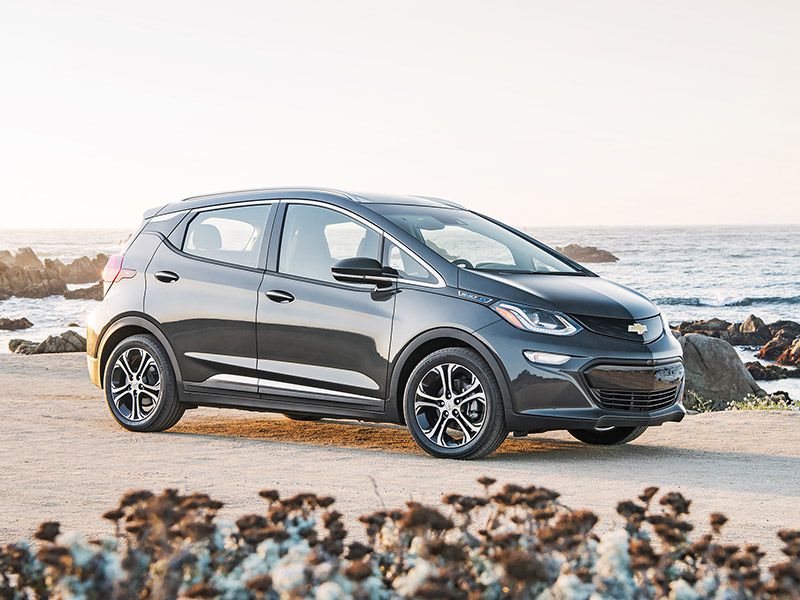
2017 Chevrolet Bolt EV exterior front angle hero ・ Photo by General Motors
When Tesla announced plans for an electric car with over 200 miles of range and a $35,000 price tag, people literally lined up for hours to put down a deposit. The Tesla Model 3 is still months (if not years) away from the showroom, but Chevrolet will sell you just such a car right now: The 238-mile-range, $30,000, all-electric Bolt EV.
Bolt: Latest in a Long Line of GM EVs
General Motors, Chevrolet's parent company, has a long history of electric cars. Back in the late 90s, it started leasing the EV-1, which showed the world that electric cars were more than glorified golf carts—they could be futuristic and a lot of fun. More recently, Chevrolet has been selling the Volt, an electric car with a built-in gasoline-powered generator that has helped thousands of range-anxious buyers ease their way into the world of electric vehicles (EVs), as well as the Spark EV, an electric version of Chevrolet's plucky minicar. GM's latest-and-greatest is also a milestone: The Bolt is the first affordable all-electric car with more than 200 miles of range to come from a major automaker. Technically, the retail price starts at $37,495, but the Bolt EV is eligible for a $7500 federal tax credit that brings the price under $30K. Incentives in other states may lower the take-home price of the Bolt even further.
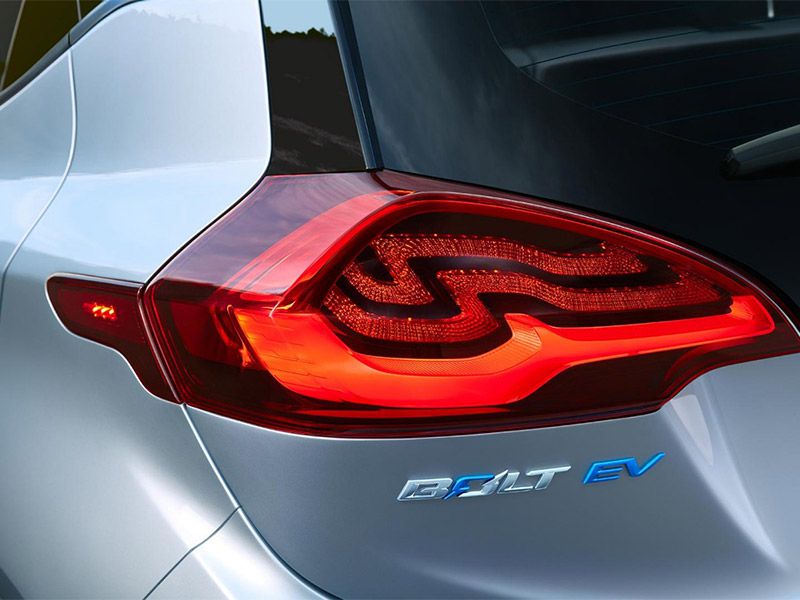
Photo by General Motors
A Dedicated EV
The Bolt was designed from the outset to be an electric vehicle, and that gives it certain advantages: The designers need not shape the car to provide room for a bulky gasoline engine and transmission. In fact, the Bolt's electric powertrain—which produces a strong 200 horsepower and 266 lb.-ft. of torque—is almost shockingly small. Chevrolet has given the Bolt a fairly conventional shape, but you'll notice the unusually abrubt nose; that is, of course, the space where the compact motor is (and a bulky gasoline engine isn't). The battery pack goes under the floor, which accounts for the Bolt's tall stance—a trait that is perfectly acceptable considering the popularity of small SUVs. The Bolt EV really is more like a small crossover, though its pug-nosed shape makes it look more like a small hatchback.
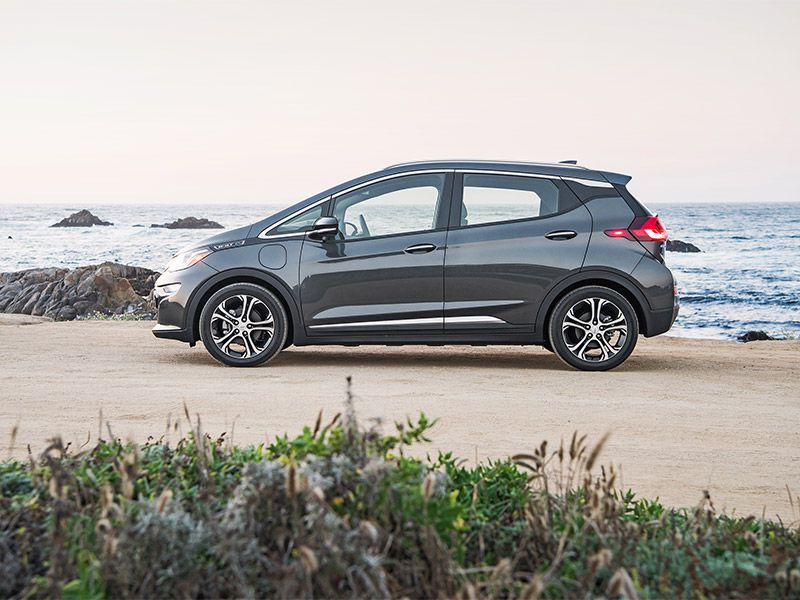
Photo by General Motors
Futuristic and Approachable
Inside, the the 2017 Chevy Bolt is futuristic yet approachable. Two screens dominate the interior; one serves as the instrument panel, the other as the infotainment display. Blues, greens, and whites dominate the screens, giving the Bolt's interior a bright, friendly look. The instrument screen has multiple display options, all of which are fairly simple and easy to understand. Speed and power consumption are prioritized, the goal of the latter being to help the driver fine-tune her technique to stretch the Bolt EV's range far beyond the EPA-rated 238 miles.
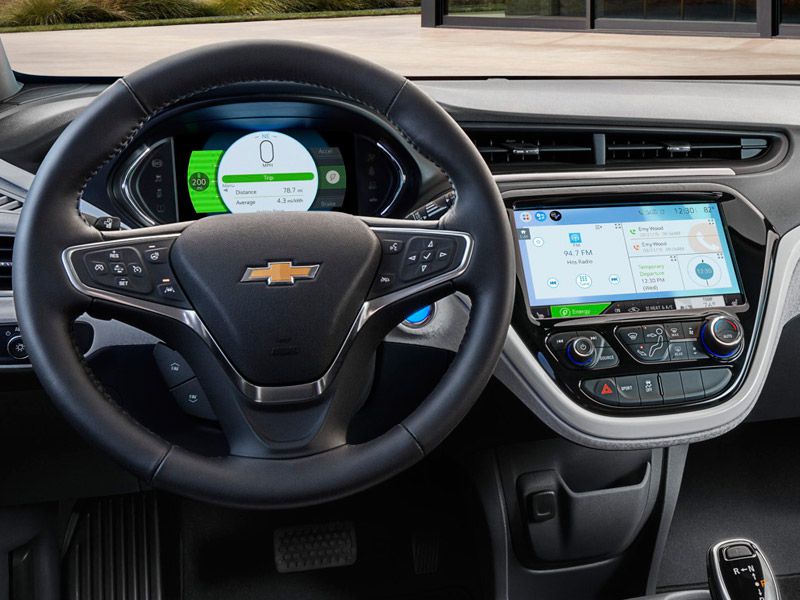
Photo by General Motors
Big Battery = Big Charge Times
The secret to the Bolt's range is simple: It has a big battery, one that stores 60 kWh (compare that to the 20 kWh of the Spark EV, which had an 82-mile range). But a big battery means big charge times. The Bolt's 7.2-kW charger is faster than the 6.6-kW units in most EVs, but even so, while most EVs with a 70–100-mile range need about four hours to charge from a Level 2 240-volt charger, the Bolt EV requires nine hours. And while it can be charged from a 120-volt outlet, doing so will take the better part of 24 hours. That said, 238 miles of range is way more than most drivers will need in a typical day (or two, or three), so there may not be much need for full charging. The Bolt EV does support DC fast charging, but such capability is an extra cost option ($750). The Bolt EV uses the same SAE Combo connector as other American and European EVs, and the depleted battery can be quick-charged to 90 miles of range in half an hour and 160 miles in 60 minutes.
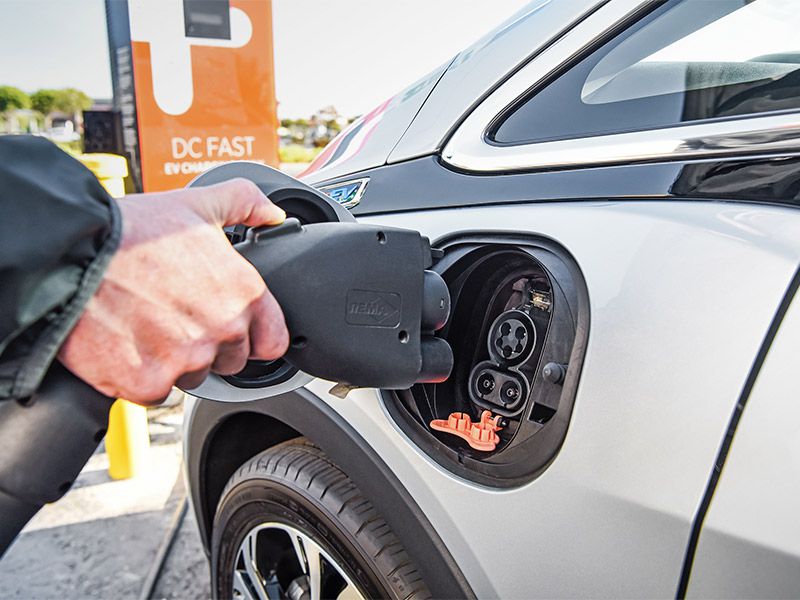
Photo by General Motors
Driving the Bolt EV
The driving experience is a definite high point. This being an electric car, you don't start the Bolt so much as turn it on: Step on the brake, press the power button, and when the dashboard says READY, off you go. The Bolt uses the same shifter as found in other General Motors cars including the Buick LaCrosse and Cadillac XT5. It's designed to make the car difficult to put into reverse by accident; as a consequence, it's also difficult to put it into reverse on purpose. And while most electric cars have a “B” range—that stands for Brake—the Bolt has L range. Shifting to L does nearly the same thing as shifting to B in other EVs (more on that in a moment), but it seems as if Chevy was too cheap to print up a new label for the shifter. It's not the only example of cost-cutting in the Bolt, and we'll talk more about that in a moment as well.
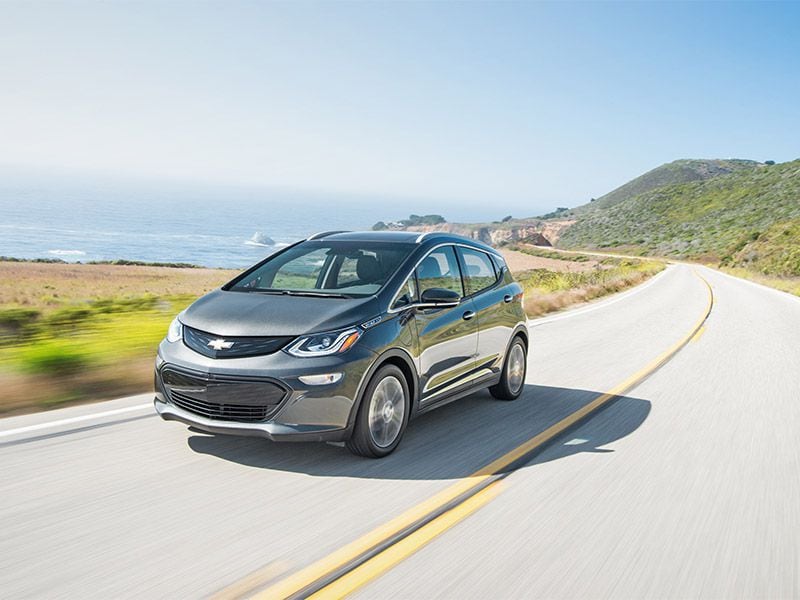
Photo by General Motors
Smooth, Quiet Power
If you've never driven an EV, you're bound to enjoy the experience: Electric motors deliver a smooth, soundless flow of power, delivering strong acceleration with eerie silence. The Bolt is quick even by EV standards, with GM claiming a 0–60 mph time of under seven seconds. The steering is light and reasonably responsive, and, with the big battery pack slung low under the floor, it's a very stable car. Should you be so inclined, you can hustle it around corners quite quickly, and the Bolt is happy to do your bidding, with the low-rolling-resistance tires letting out a squeal long before the limits of traction are reached. The Bolt's relatively small size also makes it very maneuverable in town. One issue with electric cars is road noise—there's no engine thrum to mask it. The Bolt EV is fairly quiet, but some road noise is apparent at highway speeds.
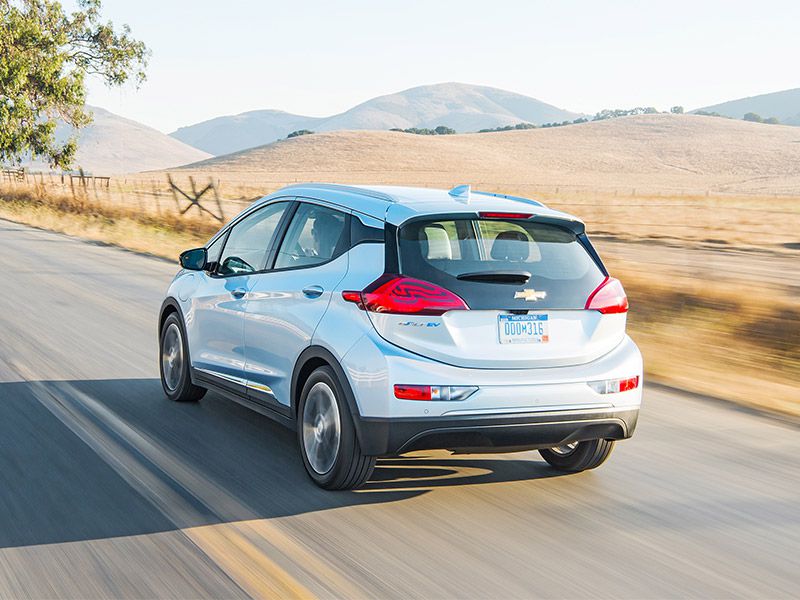
Photo by General Motors
One-Pedal Driving
One thing that makes the 2017 Chevrolet Bolt unusual is its one-pedal driving mode, engaged by shifting to L (which should be labeled B, or perhaps O for One). In this mode, pressing on the accelerator speeds up the car, and lifting off the pedal engages the regenerative brake, which uses the motor to generate electricity that charges the battery and creates resistance that slows the car. Most EVs do the same thing in their own B modes, but the difference is how much regen the Bolt develops—enough to slow the car sharply and even bring it to a complete stop without the driver touching the brake pedal. The brake lights do come on in this mode, and the level of braking is controlled by how much the driver eases off the pedal. Also, a button on the back side of the steering wheel cranks up the regen for even more braking effort; only sharp panic stops require the brake pedal. Once you get used to the system—and it really doesn't take long—you really can drive around using only the accelerator. Very cool!
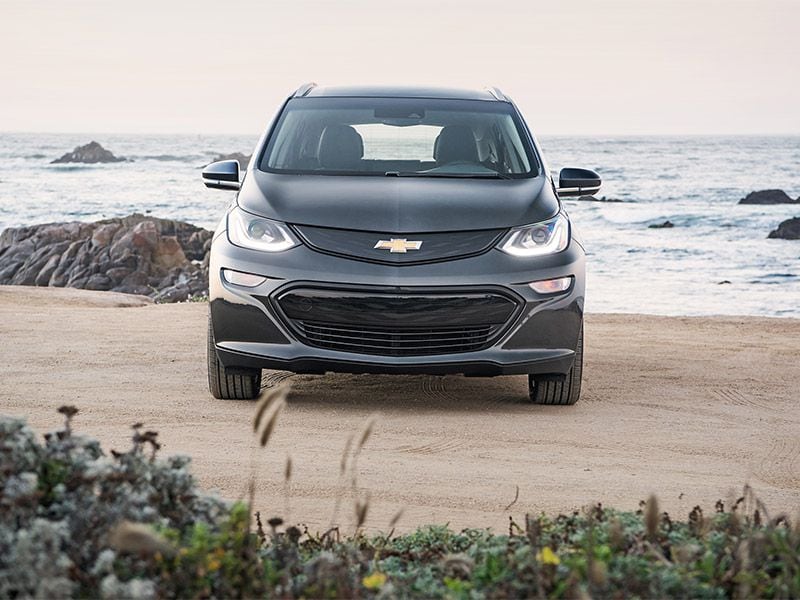
Photo by General Motors
Two-Pedal Driving
Those who prefer old-fashioned two-pedal driving can simply leave the selector in D. The Bolt produces regenerative braking through the brake pedal, but again, it differs from the competition. Most EVs (and most hybrids) use something called blended or mix braking: Stepping on the brake pedal provides a mix of regenerative and regular (friction) braking. Most of these other cars can't generate as much low-speed regen as the Bolt, so they must increase the use of the friction brakes as the car slows down. This can result in uneven braking response and abrupt stops. The Bolt uses a simpler system: The first 15 percent or so of brake pedal travel engages the regenerative brake, and anything past that engages the friction braking. (The steering wheel button can also be used to engage the regenerative brake.) Though this method doesn't have the same range-extending abilities—remember, regen also charges the battery—it does provide smoother stops than other EVs, and its mechanical simplicity keeps the cost down.
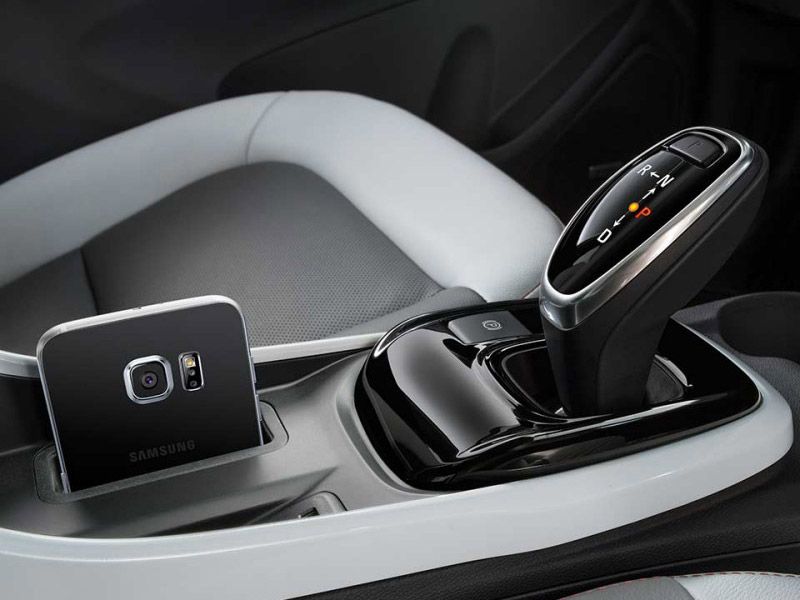
Photo by General Motors
Obvious Cost-Cutting
Unfortunately, there are other obvious cost-cutting attempts that aren't so benign, most notably the interior. The design itself is sound: We like the sweeping shapes and contrasting colors, and there's even an attempt at some unique texturing on the dashboard. But nearly everything is made of plastic, and it isn't the thick, rich stuff you'll find in other GM products—this plastic feels thin and cheap, an obvious attempt to reduce the Bolt's weight and price. We've praised Chevrolet for the high quality of its interiors of late, and maybe that's part of the problem: We expect better. The plastics in the Bolt's cabin feel as cheap as (if not cheaper than) those in the $13,000 Chevy Spark minicar. While $30,000 may be inexpensive for an electric car, it's still a serious chunk of change, and we'd like the Bolt's cabin to reflect that.
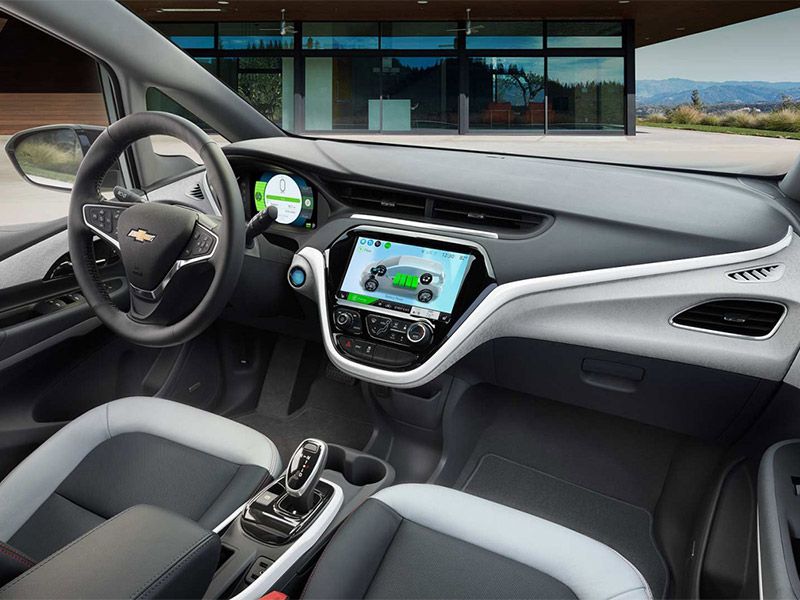
Photo by General Motors
Good Accommodations
As for accommodations, we can't complain much: The Bolt's front seats are comfortable, and the view out Chevy's electric car is good. The back seats are quite spacious, and the floor is unusually wide at foot level: Most cars have some sort of reinforcement where the B-pillar (the post between the front and rear doors) meets the floor, but with the battery pack's case providing so much stiffness, there's less need for obtrusive structure. The trunk has a wide opening and offers 16.9 cubic feet of space, about what we expect from a small hatchback, but small when compared to compact SUVs.
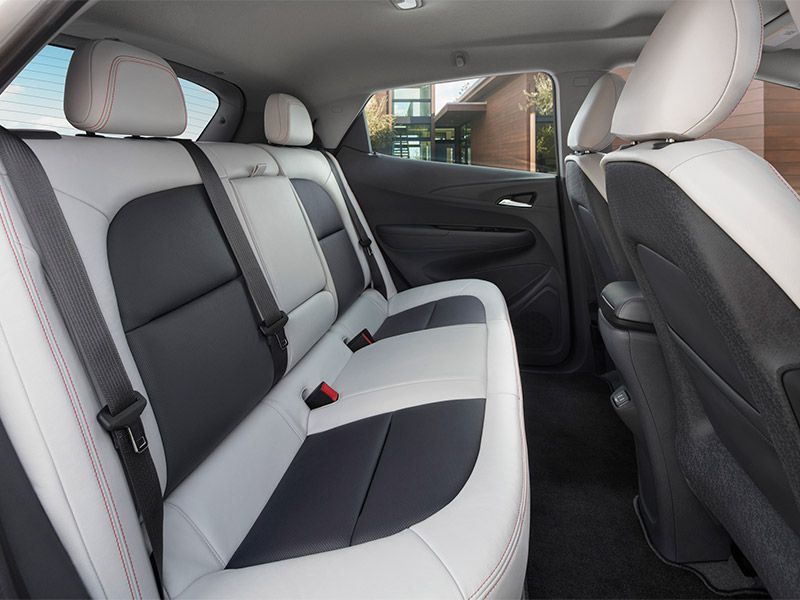
Photo by General Motors